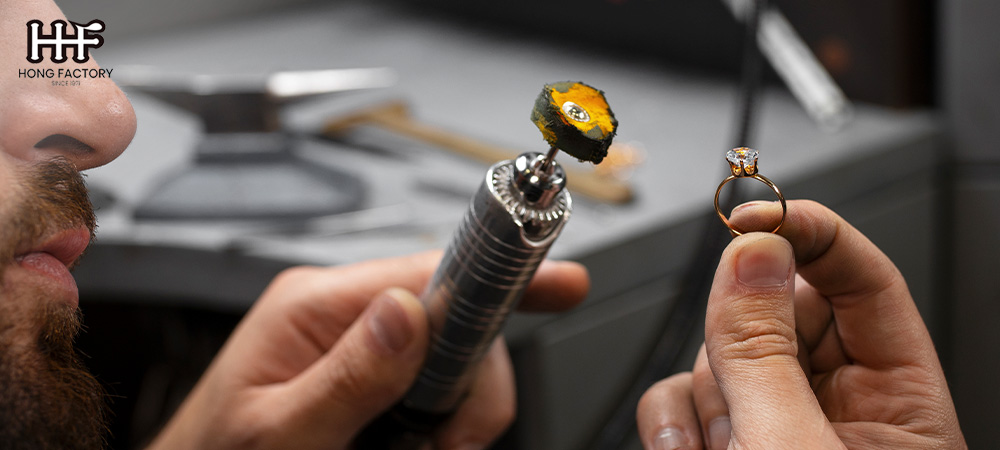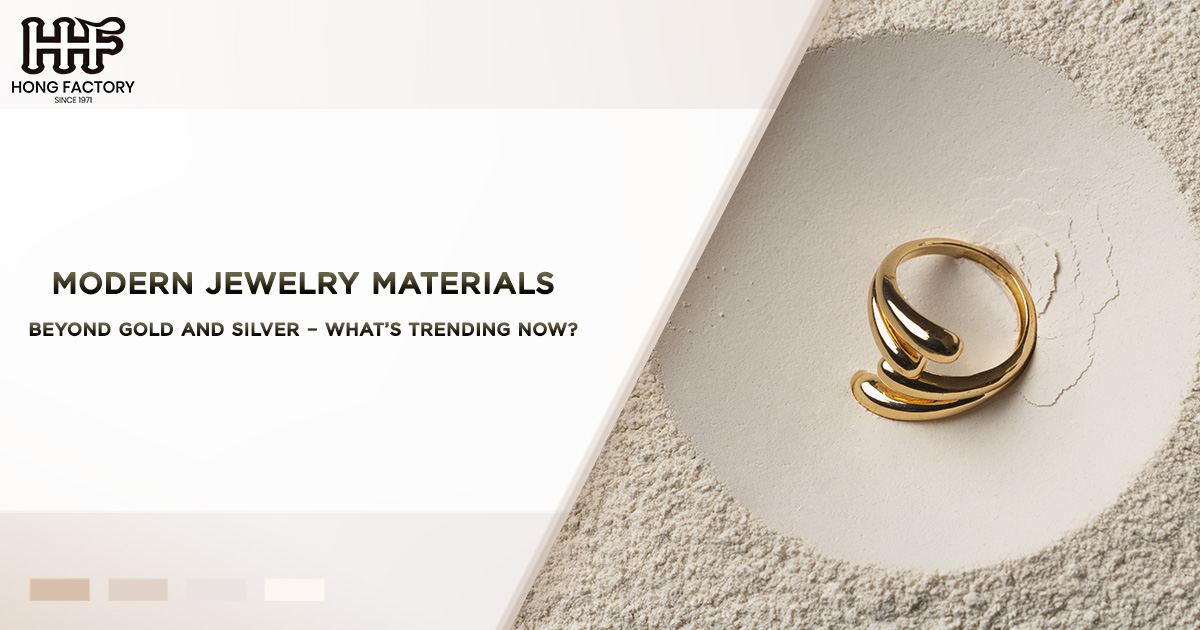In the ever-evolving world of fashion and accessories, jewelry has always held a special place. While traditional precious metals like gold and silver continue to dominate the market, a new wave of modern materials is making its mark in contemporary jewelry design. This article explores the exciting trends in jewelry materials that are captivating designers and consumers alike.
The Rise of Alternative Materials
Breaking Away from Tradition
For centuries, gold and silver have been the go-to materials for fine jewelry. However, as consumers seek unique and innovative designs, jewelers are turning to alternative materials that offer both aesthetic appeal and practical benefits. Among the most popular modern materials gaining traction in the jewelry world are titanium, stainless steel, and carbon fiber.
The Appeal of Modern Materials
These contemporary materials are not just about being different; they bring their own set of advantages to the table. Durability, lightweight properties, and unique visual characteristics are just a few reasons why designers and wearers are gravitating towards these alternatives.
Titanium – The Lightweight Powerhouse
Strength Meets Elegance
Titanium has emerged as a favorite among modern jewelry designers. Known for its incredible strength-to-weight ratio, titanium jewelry offers durability without the heft often associated with traditional metals.
Versatility in Design
One of titanium’s most appealing qualities is its versatility. It can be colored through anodization, allowing for a wide range of hues that are not possible with traditional precious metals. From sleek, minimalist rings to bold, avant-garde necklaces, titanium’s adaptability makes it a designer’s dream.
Hypoallergenic Properties
For those with sensitive skin or metal allergies, titanium is an excellent choice. Its hypoallergenic properties make it ideal for everyday wear, especially for items like earrings and body piercings.
Stainless Steel – Affordable Luxury
Durability Meets Affordability
Stainless steel has made significant inroads in the jewelry market, offering a perfect blend of durability and affordability. Its resistance to tarnish and corrosion makes it an excellent choice for everyday wear.
Modern Aesthetic
The cool, sleek look of stainless steel aligns perfectly with contemporary design aesthetics. It’s particularly popular in men’s jewelry, where its masculine appearance and low maintenance requirements are highly valued.
Versatility in Finishing
Stainless steel can be polished to a high shine or given a matte finish, offering versatility in its appearance. This adaptability allows designers to create everything from minimalist pieces to more elaborate designs.

Carbon Fiber – The Future of Jewelry
Innovative and Avant-Garde
Carbon fiber represents the cutting edge of jewelry materials. Its unique texture and ultra-lightweight properties make it a standout choice for those seeking something truly different.
Strength and Flexibility
Despite its lightweight nature, carbon fiber is incredibly strong. This combination of strength and flexibility opens up new possibilities in jewelry design, allowing for larger pieces that remain comfortable to wear.
Futuristic Appeal
The distinctive woven pattern of carbon fiber gives jewelry a futuristic, high-tech appearance that appeals to those with a taste for modern aesthetics.
Combining Modern and Traditional Materials
The Best of Both Worlds
One of the most exciting trends in contemporary jewelry is the combination of titanium, stainless steel, and carbon fiber with traditional precious metals. This fusion creates pieces that are both innovative and familiar, appealing to a wide range of tastes.
Innovative Inlays and Accents
Designers are using these modern materials as inlays or accents in gold and silver pieces, creating striking contrasts and unique textures. For example, a gold ring might feature a carbon fiber inlay, or a titanium bracelet could be adorned with diamond accents.
Pushing Design Boundaries
The combination of traditional and modern materials is pushing the boundaries of jewelry design. It allows for the creation of pieces that were previously impossible, both in terms of aesthetics and structural integrity.
Sustainability and Ethical Considerations
Eco-Friendly Options
As consumers become more environmentally conscious, the use of sustainable materials in jewelry is gaining importance. Materials like recycled titanium, stainless steel, and carbon fiber offer eco-friendly alternatives to newly mined precious metals.
Ethical Production
The production of these modern materials often involves less environmental impact compared to traditional mining operations. This aspect appeals to consumers who are concerned about the ethical implications of their jewelry choices.
Technological Advancements in Jewelry Making
3D Printing and Modern Materials
The advent of 3D printing technology has revolutionized jewelry design, particularly when it comes to working with modern materials. This technology allows for the creation of complex designs that would be difficult or impossible to achieve through traditional manufacturing methods.
Smart Jewelry
The integration of technology into jewelry is another emerging trend. Materials like titanium and carbon fiber are ideal for creating smart jewelry that incorporates electronic components, such as fitness trackers or NFC chips.
Care and Maintenance of Modern Jewelry
Easy Upkeep
One of the advantages of jewelry made from titanium, stainless steel, and carbon fiber is its low maintenance requirements. Unlike gold and silver, these materials are resistant to tarnishing and don’t require frequent polishing.
Cleaning Tips
While these materials are durable, proper care can ensure they maintain their appearance. Simple cleaning with mild soap and water is often sufficient for most pieces made from these modern materials.
The Future of Jewelry Materials
Ongoing Innovation
As technology advances, we can expect to see even more innovative materials entering the jewelry market. From shape-memory alloys to advanced composites, the future of jewelry materials is exciting and full of possibilities.
Customization and Personalization
The versatility of modern materials, combined with advanced manufacturing techniques, is opening up new avenues for customization. Consumers can now have jewelry pieces tailored to their exact specifications in ways that were not possible with traditional materials.
Conclusion
The world of jewelry is no longer confined to the glitter of gold and silver. Modern materials like titanium, stainless steel, and carbon fiber are redefining what’s possible in jewelry design. These materials offer a perfect blend of aesthetics, durability, and innovation, appealing to a new generation of jewelry enthusiasts who value uniqueness and practicality alongside beauty.
As we look to the future, it’s clear that these modern materials will continue to play a significant role in shaping the jewelry industry. Whether used alone or in combination with traditional precious metals, they offer endless possibilities for creativity and self-expression.
